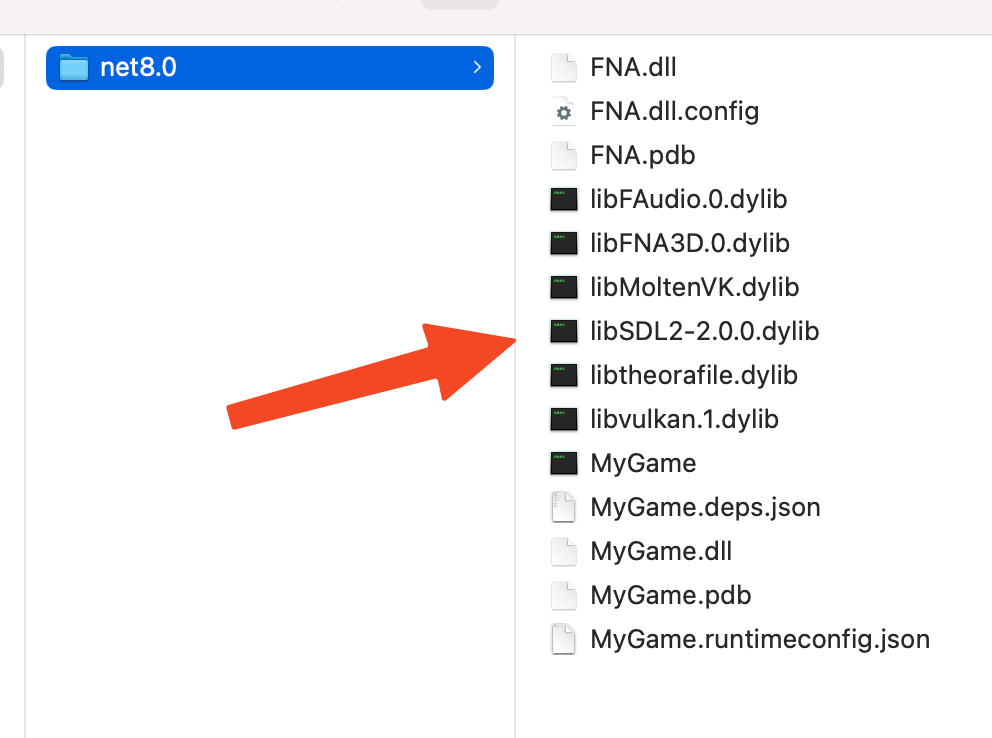FNA is a reimplementation of the Microsoft XNA Game Studio 4.0 Refresh libraries, the framework with which I started learning to create video games.
FNA has good support for Windows and Linux to create a viable environment, but it has some problems with macOS, specially with M processors. So if you want to develop a FNA game in macOS is not as simple as seen, but I finally got to have a setup in my Mac.
If you want to develop games in macOS using FNA, follow these steps, these are working for me, but I can’t guarantee that it will work 100% for you. If you have problems, you can join to the Discord Server.
Install brew
First of all, we need to setup brew to be able to install all the requirements.
/bin/bash -c "$(curl -fsSL https://raw.githubusercontent.com/Homebrew/install/HEAD/install.sh)"
Install the required prerequisites
Once you have installed brew, now is time to install python, cmake and git.
brew install cmake python3 git
Get the fnalibs and compile for the platform
This is the more important step, FNA uses natives libraries to develop and run games,
the FNA team provides the native libraries for Windows, Linux, and x86_64 macOS but for
arm64 we need to compile by our self, but thanks to TheSpydog and his repo, we can compile
our libraries easier than before.
First, you need to download the repo: https://github.com/TheSpydog/fnalibs-apple-builder
The repo has clear instructions for building, so we only need to reproduce here.
For example, if you download the repo in the Download folder, you need to go to the folder
in the terminal and run the commands.
cd ~/Downloads
./updatelibs
./buildlibs macos # Build for mac, you can build for ios/ios-sim/tvos/tvos-sim/all too
After building the libraries, you are going to have a bin directory where you are going to find the native libraries that you are going to use.
Install dotnet 8
FNA uses C# to write games, so we need to install dotnet in your mac, go to the official site and install the Arm64 version.
Create your project
Finally we can create our project for our game. Open to your terminal, then go to the location where you are going to put your project.
cd ~/Desktop
mkdir MyGame
cd MyGame
dotnet new sln # Create a solution file to add the projects
dotnet new console -o MyGame
dotnet sln add MyGame/MyGame.csproj
You need to add the FNA repo, the FNA FAQ’s has a explanation why they are not using NuGet packages, so, in the terminal run the this command.
git clone --recursive https://github.com/FNA-XNA/FNA
dotnet sln add FNA/FNA.Core.csproj # Add the core project because we are using dotnet core
We need to add the reference in our project so we can get the FNA Framework working in our code.
cd MyGame
dotnet add reference ../FNA/FNA.Core.csproj
Once we have created the reference, we need to build our project.
dotnet build
The build command, is going to generate a build directory, you need to put the native libraries
that compiled early in the build/Debu/net8.0 path.

Creating the Content folder
If you have used Monogame or XNA, you know that we need to use a Content Pipeline to convert the files
in a .xnb format. In FNA we have more freedom in our assets,
The FNA documentation says:
FNA supports loading common data formats like PNG, WAV and OGG directly, and the community maintains a few libraries for font loading and rendering.
But we want to emulate XNA, so in your project root folder, create a folder and named
Content.

But we need a little of configuration in the MyGame.csproj to add the Content folder
to our bin directory. Open and modify MyGame.csproj to add the next code.
<ItemGroup>
<None Include="Content\**" CopyToOutputDirectory="PreserveNewest" />
</ItemGroup>
Your file should looks like this:
<Project Sdk="Microsoft.NET.Sdk">
<ItemGroup>
<ProjectReference Include="..\FNA\FNA.Core.csproj" />
</ItemGroup>
<ItemGroup>
<None Include="Content\**" CopyToOutputDirectory="PreserveNewest" />
</ItemGroup>
<PropertyGroup>
<OutputType>Exe</OutputType>
<TargetFramework>net8.0</TargetFramework>
</PropertyGroup>
</Project>
Test our FNA setup
Now, is time to test and see if all the steps are working.
First, download the ball image (I took from Monogame Tutorial)
and save it as ball.png in the Content folder.

Now, replace the Program.cs file with this code
using System;
static class Program
{
[STAThread]
static void Main()
{
using (var g = new MainGame())
{
g.Run();
}
}
}
Create a new file and named it MainGame.cs and add this code
using Microsoft.Xna.Framework;
using Microsoft.Xna.Framework.Graphics;
using Microsoft.Xna.Framework.Input;
public class MainGame : Game
{
private GraphicsDeviceManager _graphics;
private SpriteBatch _spriteBatch;
Texture2D ballTexture;
public MainGame()
{
_graphics = new GraphicsDeviceManager(this);
Content.RootDirectory = "Content";
}
protected override void Initialize()
{
// TODO: Add your initialization logic here
base.Initialize();
}
protected override void LoadContent()
{
_spriteBatch = new SpriteBatch(GraphicsDevice);
ballTexture = Content.Load<Texture2D>("ball");
}
protected override void UnloadContent()
{
base.UnloadContent();
}
protected override void Update(GameTime gameTime)
{
if (GamePad.GetState(PlayerIndex.One).Buttons.Back == ButtonState.Pressed || Keyboard.GetState().IsKeyDown(Keys.Escape))
Exit();
// TODO: Add your game logic here
base.Update(gameTime);
}
protected override void Draw(GameTime gameTime)
{
_graphics.GraphicsDevice.Clear(Color.CornflowerBlue);
// TODO: Add your drawing code here
_spriteBatch.Begin();
_spriteBatch.Draw(ballTexture, new Vector2(0, 0), Color.White);
_spriteBatch.End();
base.Draw(gameTime);
}
}
This is a code that was generated in the template of XNA (I just added the ball), and it is a good template for start with your game.
Running the game
Now you can run your game
dotnet run
You should see our FNA window with a ball :D

From here, you can read XNA, Monogame and FNA tutorials to learn more or if you are a experience developer you can test your ideas.